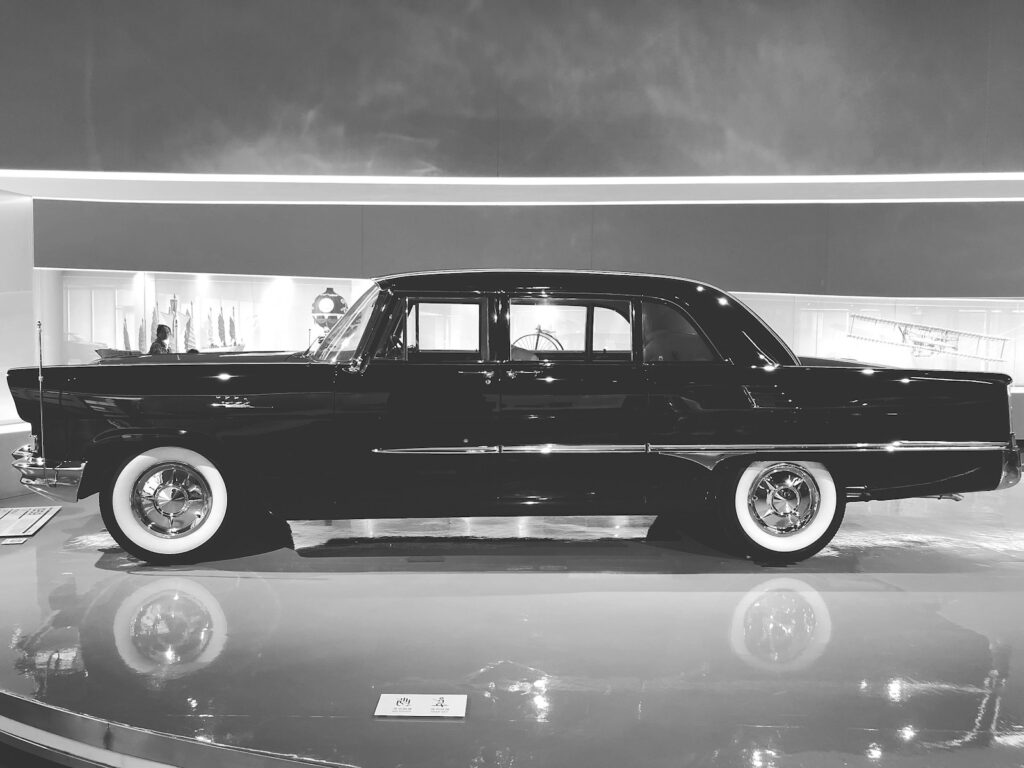
George Barris. The name itself conjures images of chrome, candy paint, and cars that looked like they drove straight out of a futuristic dream. If you’ve ever gazed upon a custom car and felt that irresistible pull, chances are, you’ve been touched by the genius of Barris Kustoms. This legendary shop, helmed by brothers George and Sam Barris, wasn’t just building cars; they were crafting automotive art, pushing boundaries, and ultimately, defining an entire era of American car culture.
Starting small in Bell, California, Barris Kustoms quickly exploded onto the scene after George’s 1941 Buick custom won top honors at the first Hot Rod Exposition Show in January 1948. From that moment on, business truly took off, leading to bigger shops and an ever-expanding staff. For the next decade, these Northern California natives would unleash some of the most iconic and trendsetting customs to ever grace the asphalt, changing the game forever.
We’re about to take a wild ride through some of their most jaw-dropping creations from the 1950s—the cars that weren’t just vehicles but statements. These are the builds that showcased groundbreaking design, innovative features, and a fearless approach to customization. Get ready to have your mind blown as we check out the first seven incredible machines that cemented Barris Kustoms as true legends!

1. **The Golden Sahara II**The Golden Sahara II. Just the name sparkles, doesn’t it? This car is practically a legend on wheels, and it recently made headlines when it sold at auction for a cool $1,265,000! That’s more than triple its value from just seven years ago, proving that some classics only get better with age and a good glow-up.
This bubble-top marvel started its life in 1953 from the humble wreck of a Lincoln Capri. George Barris himself, with some financial backing from fellow customizer Jim Street, built the original Golden Sahara. It toured the car show circuit for a couple of years, turning heads wherever it went, establishing its early reputation.
Jim Street then decided it was time for an upgrade, and boy, did he upgrade it! Street gave the car a full makeover with modified styling, an innovative steering yoke that controlled both gas and brakes, remote control capabilities, and even an automatic braking system. Talk about futuristic for its time!
But the real showstopper? Those translucent, glowing Neothane tires, developed by Goodyear. Imagine rolling down the street with tires that literally light up the night! Goodyear had high hopes for these, aiming to sell them to the public, but ultimately, the dream of glowing tires sadly had to be abandoned after years of development. Still, the Golden Sahara II had them, and it was epic, even making appearances in the film “Cinderfella” and on the TV Game Show “I’ve Got a Secret” in 1962. It’s a true piece of automotive history that continues to shine.
Read more about: Steer Clear: 14 SUVs With a History of High-Cost Fixes in Their First 5 Years
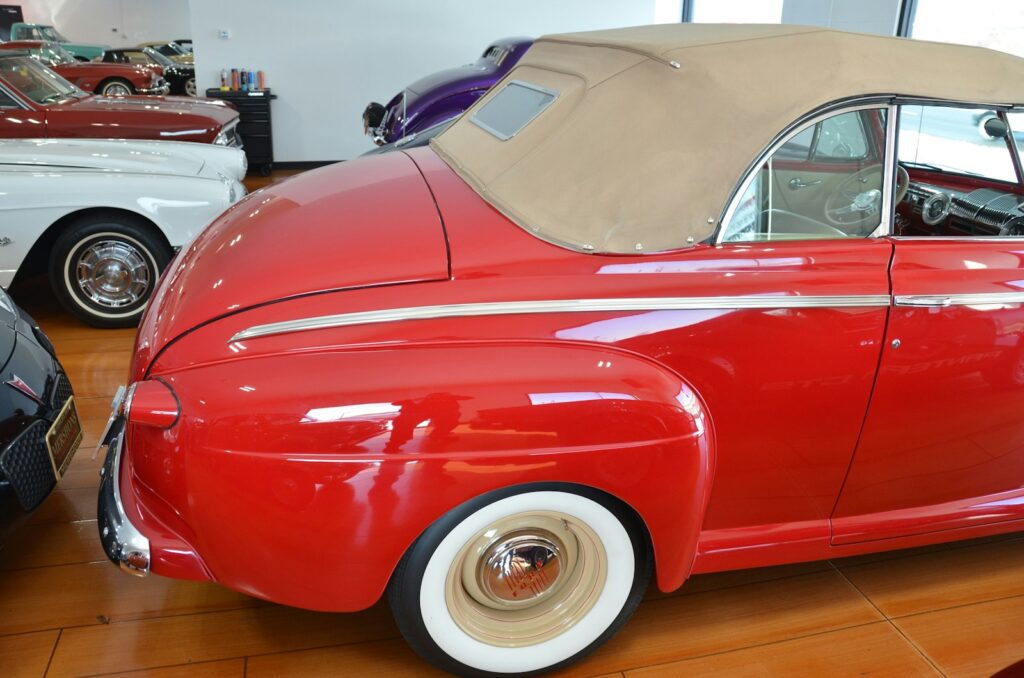
2. **Nick Matranga’s 1940 Mercury Coupe (1950)**Alright, let’s talk about the Matranga Merc. This beauty, completed late in 1950, is often hailed as the most imitated 1939-1940 Mercury Custom ever built, and for good reason! Barris Kustoms poured 15 months into this iconic build, crafting something truly special for Nick Matranga, who simply wanted his car to stand out from the crowd.
The process was pretty radical, even by Barris standards. They literally chopped it up and tacked it back together, meticulously figuring out just how low they could go. When Nick saw the post cut out of the top, he absolutely loved the look and famously told George he didn’t want it back!
This bold decision inspired George to ingeniously design the curved hardtop windows, a feature that would become instantly recognizable and incredibly influential. A classic was born, a car that perfectly blended aggressive stance with elegant lines, bringing customs to the next level.
Kevan Sledge, a founding member of the So. Cal Shifters and a custom builder himself, calls it “the car that really made me realize how beautiful and fantastic customs can be.” He praises its “just right” stance, the stock side trim and grille, and especially that “home run” top. Howard Miereanu, a graphic designer, echoed this sentiment, marveling at “the beautiful lines that create the greenhouse” and how “the entire design of the car is a wonderful piece of art!” This car truly set a benchmark.
Car Model Information: 1985 Mercury Capri
Name: Mercury Cougar
Caption: 1969 Mercury Cougar (first generation)
Manufacturer: Mercury (automobile)
Layout: Front-engine, rear-wheel-drive layout
ModelYears: 1967–1997,1999–2002
Class: Pony car,Personal luxury car,Mid-size car,Sport compact
Categories: 1960s cars, 1970s cars, 1980s cars, 1990s cars, 2000s cars
Summary: The Mercury Cougar is a series of automobiles that was sold by Mercury from 1967 to 2002. The model line is a diverse series of vehicles; though the Cougar nameplate is most commonly associated with two-door coupes, at various stages in its production, the model also was offered as a convertible and a hatchback. During its production as the mid-size Mercury line, the Cougar was also offered as a four-door sedan and five-door station wagon.
In production for 34 years across eight generations (skipping the 1998 model year), the Cougar is second only to the Grand Marquis (36 years) in the Mercury line for production longevity. 2,972,784 examples were produced, making it the highest-selling Mercury vehicle. During the 1970s and 1980s, the marketing of the Mercury division was closely associated with the Cougar, with promotional materials advertising Mercury dealers as “The Sign of the Cat” with big cats atop Lincoln-Mercury dealer signs. Cat-related nameplates were adopted by other Mercury lines, including the Bobcat and Lynx.
During its production, the Cougar was assembled at the Dearborn Assembly Plant (part of the Ford River Rouge Complex) in Dearborn, Michigan from 1967 until 1973, San Jose Assembly (Milpitas, California) from 1968 into early 1969, Lorain Assembly (Lorain, Ohio) from 1974 until 1997, and at Flat Rock Assembly (Flat Rock, Michigan) from 1999 through 2002.
Get more information about: Mercury Cougar
Buying a high-performing used car >>>
Brand: Mercury Model: Coupe
Price: $16,984 Mileage: 117,631 mi.
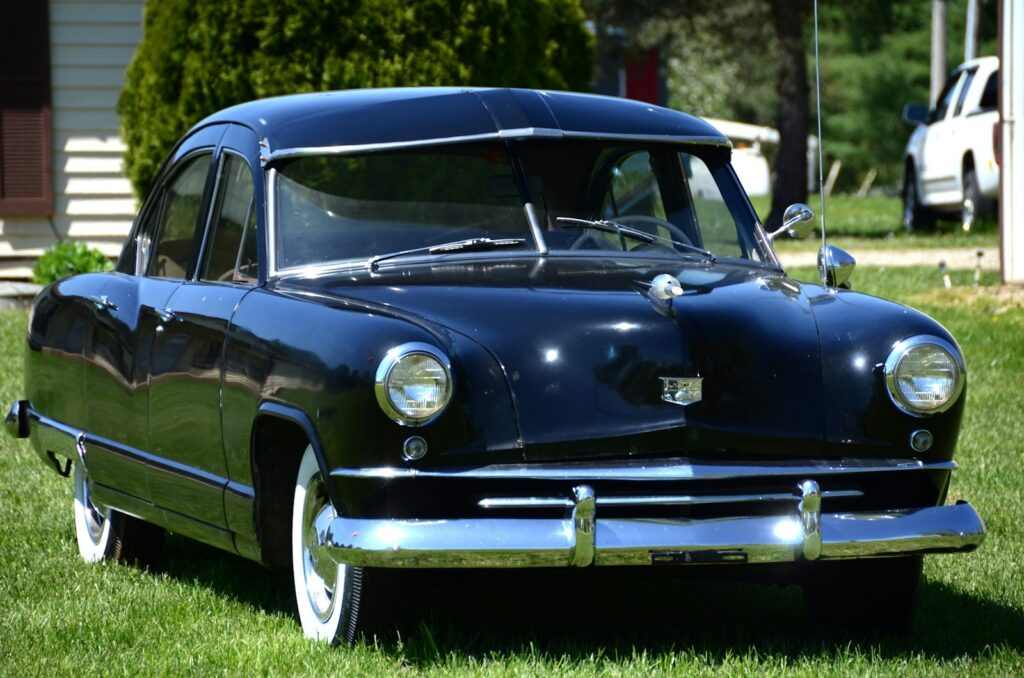
3. **Bob Hirohata’s 1951 Mercury Club Coupe (1952) – The Hirohata Merc**If there’s one custom car that practically screams “classic era royalty,” it’s the Hirohata Merc. Often referred to as *the* most famous custom of its time, this 1951 Mercury Club Coupe truly changed the game when it debuted in 1952. What made it so special? Well, for starters, it was both the first chopped 1951 Mercury *and* the first hard-topped 1951 Mercury. Talk about a double whammy of innovation!
Unlike many customs of its era that favored dark metallic lacquers, George Barris took a bold and brilliant step with the Hirohata Merc’s paint job. Early in 1952, he painted it in a stunning two-tone Sea Foam Green with Organic Green below the trim spears. This fresh color palette, combined with the signature curved hardtop windows — a nod to Nick Matranga’s earlier Mercury — created an undeniable winning combination that was unlike anything else on the road.
Teddy Zgrzemski, who worked for Barris as a painter’s helper, remembers the car seemed to flow, from “the front hood extension that flowed into the grille surround” to “the doors that got rid of the step in the middle” and “the scoops in the quarters.” Even the flush mounted skirts and the ’54 Mercury taillights contributed to its seamless look. The top chop was also hailed as the “best thing of all, made into a hardtop with curved quarter window frames.”
Custom car legend John D’Agostino passionately declares, “The Hirohata Merc had several innovative features that make it the ‘King of the Mercs’ then and now.” Teddy also highlights how the car’s color was a new idea for a custom, and its feature in a “LA to Indy” custom magazine article was a first, solidifying its widespread impact and fame. Its iconic status isn’t just about looks; it’s about the vision and craftsmanship that propelled it to legendary heights, influencing countless builds for decades to come.
Car Model Information: 2022 Hyundai PALISADE Calligraphy
Caption: 1939 Mercury 8 two-door Sedan
Manufacturer: Mercury (automobile)
Production: 1939–1951
Assembly: Main plant:{{ubl,item_style=margin-left:1.5em,Dearborn, Michigan,Wayne, Michigan
Layout: FR layout
Class: Full-size
Name: Mercury Eight
Successor: Mercury Monterey,Mercury Custom
Categories: 1940s cars, 1950s cars, All articles with unsourced statements, Articles with short description, Articles with unsourced statements from September 2017
Summary: The Mercury Eight is an automobile that was produced by the American manufacturer Ford Motor Company under their now defunct division Mercury between 1939 and 1951. The debut model line of the Mercury division, Ford positioned the full-size Mercury Eight between the Ford Deluxe (later Custom) model lines and the Lincoln. In total, Ford assembled three generations of the Eight (before and after World War II).
During its production, the Eight offered a full range of body styles, including coupes, sedans, convertibles, and station wagons. For its first generation, the Eight was produced with its own body, adapting its own version of a Ford body for its second generation; for the third generation, the Eight shared its body with the Lincoln.
For the 1952 model year, Ford expanded its namesake division to three nameplates and Lincoln and Mercury to two each, with Mercury replacing the Eight with Monterey (introduced in 1950 as a trim option), lasting until 1974.
Get more information about: Mercury Eight
Buying a high-performing used car >>>
Brand: Mercury Model: Club Coupe
Price: $34,194 Mileage: 37,781 mi.

4. **Buster Litton’s 1949 Ford – The Panoramic Ford (1953)**The “Shoebox” Ford is a classic in its own right, but Buster Litton’s 1949 Ford, dubbed “The Panoramic Ford,” took that iconic platform to an entirely new level of custom cool. This wasn’t just a Barris Kustom; it was a collaboration, showcasing the interconnected world of custom car building at the time. Barris Kustoms and Cerny’s Paint and Body initially chopped and hardtopped the top for the original owner, Allen Anderson, back in 1951.
When Allen sold the car to Buster Litton, Barris was brought back into the fold to finish off the front-end modifications, adding that unmistakable Barris touch. This iterative process of customization, with different shops contributing their expertise, was common in the era and highlighted the community spirit of the scene. Each step built upon the last, enhancing its distinct character.
Then, Cerny’s stepped in again to restyle the rear, ensuring a cohesive and stunning overall design. To top it all off, Gaylord’s Kustom Shop put the finishing touches on the build with a custom interior, making The Panoramic Ford a true masterpiece of collaborative customization. It truly was a car built by the best of the best.
Keith Weesner, a renowned artist with a passion for car culture, fondly recalls The Panoramic Ford as a “big inspiration for my shoebox.” He highlights the “Stude front fenders and the beautiful top” as its most noticeable features. He even wondered how the side window opening was formed, noting its unique curve that didn’t seem to match anything identifiable, suggesting it might have been completely custom fabricated. This car wasn’t just a custom; it was an “iconic and one off a kind Shoebox Custom” that continued to inspire artists and builders for generations with its unique blend of features and masterful execution.
Alright, gearheads and custom car fanatics, get ready to push the limits even further! In our first section, we revved up with some of Barris Kustoms’ foundational masterpieces that kicked off a revolution. Now, we’re diving headfirst into eight more groundbreaking builds that didn’t just redefine style and innovation but charted the very future of custom cars. These rides aren’t just vehicles; they’re radical designs, cultural statements, and pure, unadulterated automotive art. Prepare to have your mind blown as we unpack more legendary Barris Kustoms that left an indelible mark on history!
Car Model Information: 2022 Hyundai PALISADE Calligraphy
Name: 1949 Ford (1949–1951)
Caption: 1949 Ford Custom Four door Sedan
Manufacturer: Ford Motor Company
Production: 1948–1951
ModelYears: 1949–1951
Assembly: United States:,Dearborn, Michigan,Branch Assembly,Twin Cities, MN,Somerville, MA,Richmond, CA,Norfolk, VA,Memphis, TN,Louisville, KY,Long Beach, CA,Kansas City, MO,Edgewater, NJ,Dallas, TX,Chicago, IL,Chester, PA,Buffalo, NY,Atlanta, GA,Worldwide:,Norlane, Victoria,Singapore, Malaysia
BodyStyle: Sedan (automobile)
Predecessor: 1941 Ford
Related: Mercury Eight,Monarch (marque)
Successor: 1952 Ford
Class: Full-size Ford
Wheelbase: 114 in
Abbr: on
Length: 196.8 in
Width: 71.7 in
Weight: convert
Layout: FR layout
Engine: Cubic inch displacement
Transmission: Non-synchronous transmission,Manual transmission
Categories: Articles with short description, Cars discontinued in 1951, Cars introduced in 1948, Cars introduced in 1949, Commons category link from Wikidata
Summary: The 1949 Ford is a line of cars produced by Ford from the 1949 to 1951 model years. The successor to the prewar 1941 Ford, the model line was the first full-size Ford designed after World War II, becoming the first Ford car line released after the deaths of Edsel Ford and Henry Ford. From 1946 to 1948, each of the American Big Three concentrated on the restoration of car production, offering updated versions of their 1941-1942 model lines. Released in June 1948, the 1949 Ford was the first major “postwar” American car line, beating Chevrolet to market by six months and Plymouth by nine.
In response to its design, the model line would be called the “Shoebox Ford”, denoting its slab-sided “ponton” design. While the design theme had been in use since the late 1920s to streamline automobiles, the 1949 Ford marked its widest-scale use, removing running boards entirely and integrating front and rear fenders into a single, smooth body form.
Following the 1948 introduction of the Ford F-Series line of trucks, the Ford line was now offered solely as a car. In another change, Ford introduced stand-alone model nameplates for 1950. Designed by artist Frank L. Engle, the Ford crest emblem made its first appearance for 1950; in various forms, the emblem was used through the 1991 model year. In other firsts, this generation marked the first use of keyed ignition and the first automatic transmission option in Ford vehicles.
Get more information about: 1949 Ford
Buying a high-performing used car >>>
Brand: Ford Model: 1949 Ford
Price: $34,194 Mileage: 37,781 mi.
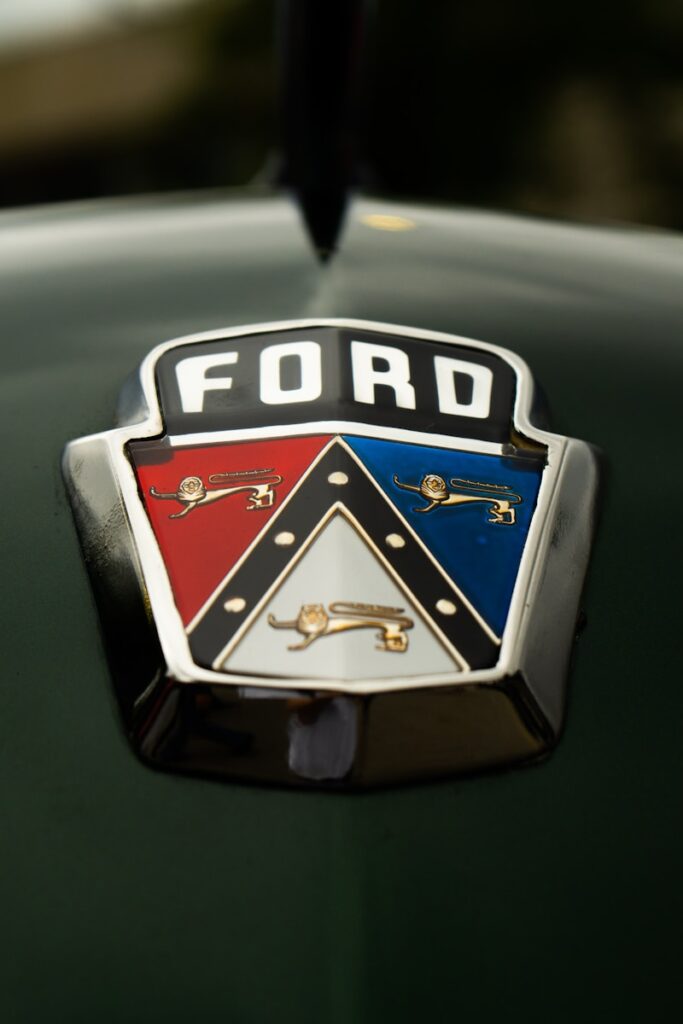
5. **Jesse Lopez’ 1941 Ford Club Coupe (1950)**If you’re wondering what truly iconic looked like at the close of an era, then Jesse Lopez’s 1941 Ford Club Coupe is calling your name! This beauty, completed around 1950, is consistently celebrated as one of the most, if not *the* most, iconic 1941 Ford Customs ever to hit the asphalt. It’s a true masterpiece that beautifully encapsulated the refined elegance of custom car building from the 1940s, setting a high bar for style and craftsmanship.
The story behind this legendary ride began when Jesse Lopez connected with the Barris Brothers themselves, George and Sam, at the 1948 Hot Rod Exposition. This was a pivotal moment for Barris Kustoms, as it was at this very show that George’s 1941 Buick Convertible snagged top honors, truly putting them on the map. This meeting laid the groundwork for a custom car that would resonate for decades.
After its transformation, the Jesse Lopez Coupe made a grand entrance at the National Roadster Show in Oakland early in 1950. It wasn’t just a car; it was a stunning “nod to the past decade,” proudly showcasing the “elegant and subtle customs of the 1940s.” This car stood as a testament to a particular aesthetic, blending understated cool with meticulous attention to detail, making it an enduring symbol of a golden age in customization.
Car Model Information: 2022 Hyundai PALISADE Calligraphy
Caption: 1932 Ford Model B Standard Tudor 2-door sedan
Name: 1932 Ford Model B
Manufacturer: Ford Motor Company
Production: 1932–1934
Predecessor: Ford Model A (1927–1931)
Successor: Ford Model 48
Class: Full-size Ford
BodyStyle: phaeton body,Pickup truck
Engine: 201 cuin
Abbr: on
Transmission: Non-synchronous transmission,Manual transmission
Wheelbase: 2692 mm
Disp: flip
Layout: FR layout
Assembly: see list below
Related: Ford Model Y,Ford Köln,Ford Rheinland,GAZ-M1
Designer: Edsel Ford
Categories: 1930s cars, All articles needing additional references, All articles with unsourced statements, Articles needing additional references from January 2021, Articles with short description
Summary: The term 1932 Ford may refer to three models of automobile produced by Ford Motors between 1932 and 1934: the Model B, the Model 18, and the Model 40. These succeeded the Model A. The Model B had an updated four-cylinder engine and was available from 1932 to 1934. The Model 18 was the first Ford fitted with the flathead V-8, and it was available in the Model 40 too in 1933 and 1934. The company also replaced the Model AA truck with the Model BB, available with either the four- or eight-cylinder engine.
The three car models were replaced by the streamlined Model 48 in 1935.
Get more information about: 1932 Ford
Buying a high-performing used car >>>
Brand: Ford Model: Club Coupe
Price: $34,194 Mileage: 37,781 mi.
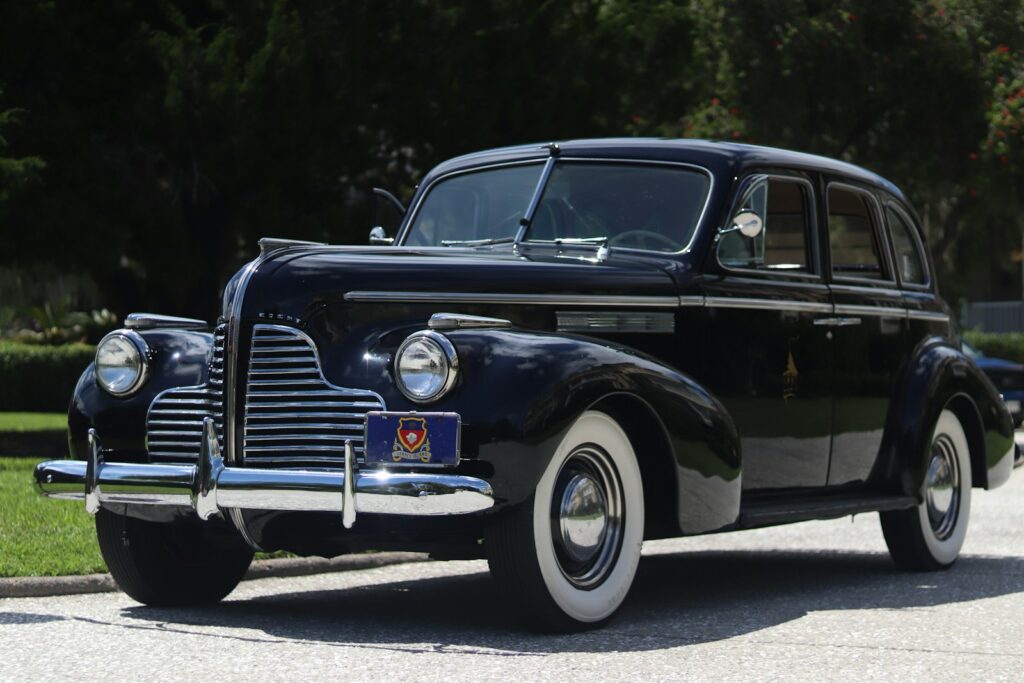
6. **Joe Urritta’s 1941 Ford Convertible Sedan (1950)**Ready for something radical? Joe Urritta’s 1941 Ford Convertible Sedan, restyled by none other than Sam Barris, was an absolute game-changer when it rolled out in 1950. This car wasn’t just customized; it was chopped, channeled, and sectioned into a whole new dimension of cool. It instantly became the most radical build that had ever emerged from the legendary Barris Kustoms shop, showcasing a fearless approach to design.
Sam Barris, with his unparalleled metal-shaping skills, took this Ford to extremes that turned heads and dropped jaws. “Chopped” meant the roof was lowered, “channeled” meant the body was dropped over the frame, and “sectioned” involved removing a horizontal slice from the body. These intense modifications weren’t for the faint of heart, but they resulted in an incredibly aggressive and low-slung profile.
The outcome of all this daring work? Once completed, this radical custom stood at an astonishingly low 49 inches high. Can you imagine cruising in something so low and sleek? Joe Urritta’s Ford wasn’t just a car; it was a rolling sculpture that pushed the boundaries of custom car design, proving that Barris Kustoms was never afraid to venture into uncharted territory, leaving an unforgettable mark on the scene.
Car Model Information: 2022 Hyundai PALISADE Calligraphy
Name: Ford Falcon
Caption: 1963 Falcon Sprint hardtop
Manufacturer: Ford Motor Company
Related: Mercury Comet,Frontenac (marque)
Production: 1959–1970
Successor: Ford Maverick (North America)
Class: Compact car
Layout: Front-engine, rear-wheel-drive layout
Chassis: Unibody
Categories: 1960s cars, 1970s cars, Articles with short description, Cars introduced in 1959, Commons category link from Wikidata
Summary: The Ford Falcon is a model line of cars that was produced by Ford from the 1960 to 1970 model years. Though preceded by the Rambler American, the Falcon was the first compact car marketed by the Big Three American manufacturers.
In contrast to its Chevrolet Corvair and (Plymouth) Valiant competitors, the Falcon was developed as a scaled-down version of the full-size Ford Galaxie sedan. Alongside its larger counterparts, the Falcon offered a full range of body styles, including two-door and four-door sedans, two-door hardtops and convertibles, two-door and four-door station wagons (the former, serving as a basis of the final Ford sedan delivery), and coupe utility pickups (serving as the basis of the Ford Ranchero). Through the 1960s, Ford would produce three distinct generations of the Falcon; a final version of the Falcon served as the lowest-price version of the Ford Torino.
For nearly two decades, the model architecture used by the Falcon was used by eleven Ford vehicle lines. Alongside the first generations of the Ford Mustang and Mercury Cougar pony cars and the Ford Econoline/Ford Falcon Van/Ford Club Wagon vans, the platform was used for two generations of successors to the Falcon, including the Ford Maverick and Mercury Comet and the later Ford Granada and Mercury Monarch; the Lincoln Versailles luxury sedan was the final model line derived from the Falcon.
During its production, the Falcon was manufactured by Ford in multiple facilities across North America. Following its discontinuation in that region, the platform continued in production through 1991 by Ford Argentina (as the Ford Granada). From 1972, Ford Australia continued development of the Falcon as a model line distinct to the region, lasting through 2016.
Get more information about: Ford Falcon (North America)
Buying a high-performing used car >>>
Brand: Ford Model: Convertible Sedan
Price: $34,194 Mileage: 37,781 mi.
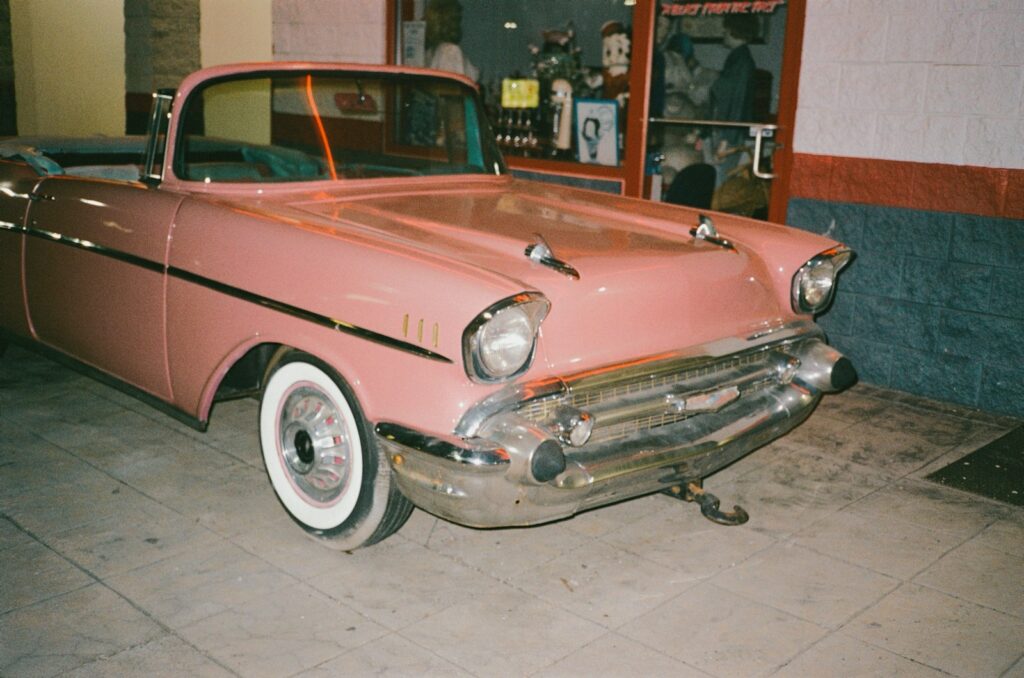
7. **Dan Landon’s 1949 Chevrolet Club Coupe (1953)**Let’s talk about a classic that truly epitomizes the early custom style: Dan Landon’s 1949 Chevrolet Club Coupe. This beauty, a traditional early styled custom by the dynamic duo George and Sam Barris, was finished up either late in 1952 or early in 1953, quickly becoming a benchmark for those seeking that perfect low-rider vibe.
Dan Landon had one clear vision: he wanted the top of his car as low as humanly possible. And when you bring that kind of challenge to the Barris Brothers, you know they’re going to deliver! They masterfully chopped the top an impressive 5 inches in the front and an even more dramatic 7 inches in the rear. This wasn’t just a trim; it was a complete transformation of the car’s silhouette, giving it an undeniable presence.
But they didn’t stop there. To achieve an even more aggressive, lower profile, the roof was further sectioned by 2.5 inches above the top of the door opening. Imagine the meticulous metalwork and vision required to pull this off! The result was a stunningly low-slung, incredibly sleek vehicle that perfectly showcased Barris Kustoms’ ability to blend traditional custom techniques with an unwavering commitment to fulfilling their clients’ boldest desires.
8. **Sam Barris’ 1950 Buick Sedanette (1953)**Now, prepare to be amazed by a personal project that took sheer grit and an unyielding vision: Sam Barris’ own 1950 Buick Sedanette. This wasn’t just any custom; it was Sam’s labor of love, a car born from the literal remains of a burnt-out Buick, transformed into a full-fledged custom masterpiece over 22 months of incredibly hard work. It was completed in 1953, and the effort involved was so immense that Sam famously admitted he would “never do another car for himself” requiring such a monumental undertaking. Talk about dedication!
Despite the monumental effort, this Buick wasn’t just a showpiece; Sam used it as his daily driver for several months. Imagine cruising around in a car that represented hundreds, if not thousands, of hours of painstaking craftsmanship by one of the greatest customizers of all time! It was a rolling testament to his skill and passion, a car that truly embodied the spirit of overcoming adversity to create something spectacular.
But even legends have practical realities. In 1954, Sam made the difficult decision to sell his beloved Buick Sedanette. The reason? To afford eye surgery for his son, John Barris. This heartwarming detail adds another layer of depth to the car’s story, highlighting the personal sacrifices behind the gleaming chrome and perfect paint. Robert A. Radcliffe III, a talented custom car builder, shares a personal connection, recalling how his “dad almost bought it in 1960,” and calling it “just an incredibly beautiful kustom” that adds to its allure. Even Alex Gambino, of Gambino Kustoms, admits it’s one of his top picks, especially since he owns one himself! This car truly has a story for the ages.
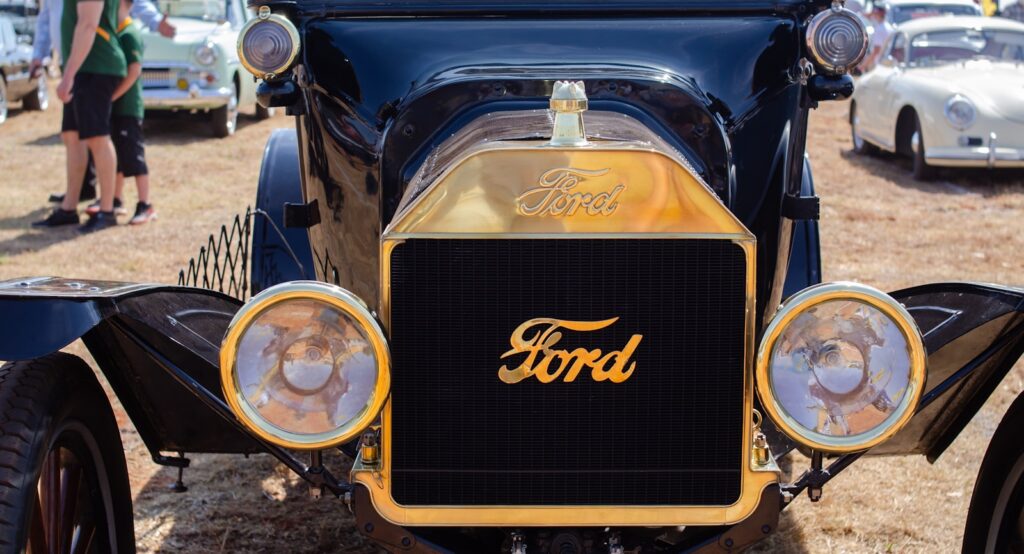
9. **Tom Pollard’s 1929 Ford Model A Roadster (1954)**Sometimes, a car’s story takes an interesting turn, and that’s definitely the case with Tom Pollard’s 1929 Ford Model A Roadster. This cool ride actually started its life as a custom project owned and built by Vultures member Kazar “Cozy” Simonian way back in the late 1940s. It already had some street cred, but it was about to get that iconic Barris touch that would elevate it to legendary status.
In 1954, George Barris himself stepped in to give the car its truly distinctive lime gold and bronze flame paint job. This wasn’t just a new coat of paint; this was *early custom paint work*, a groundbreaking move that offered “another glimpse into the future” of automotive aesthetics. Imagine the bold statement those vibrant flames made, signaling a shift towards more expressive and artful finishes on custom cars. It was a visual feast for the eyes!
And because no truly epic custom is complete without those intricate details, after George had laid down the stunning flames, the legendary Von Dutch added his signature pinstripes. This collaboration between Barris and Von Dutch on the Pollard Roadster cemented its place in custom car history, showing how different masters could come together to create a singular, unforgettable work of art. It’s a classic example of a car evolving through the hands of multiple talents, culminating in pure magic.
Car Model Information: 2022 Hyundai PALISADE Calligraphy
Caption: Kilgore, Texas
Name: Ford Model A
Manufacturer: Ford Motor Company
Production: October 1927 – March 1932
ModelYears: 1928–1932
Predecessor: Ford Model T
Successor: ubl
Class: Full-size Ford
Platform: A Chassis
Layout: FR layout
Assembly: Twin Cities Assembly Plant
BodyStyle: Sport coupe,Coupé
Engine: Ford Model A engine,Inline-four engine
Wheelbase: 103.5 in
Abbr: on
Length: 165 in
Width: 67 in
Weight: convert
Aka: GAZ-A
Transmission: Non-synchronous transmission,Manual transmission
Related: Ford Model AA
Designer: Henry Ford,Edsel Ford
Categories: 1900s cars, All Wikipedia articles written in American English, All articles with dead external links, All articles with unsourced statements, Articles with dead external links from December 2019
Summary: The Ford Model A (also colloquially called the A-Model Ford or the A, and A-bone among hot rodders and customizers)is the Ford Motor Company’s second market success, replacing the venerable Model T which had been produced for 18 years. It was first produced on October 20, 1927, but not introduced until December 2. This new Model A (a previous model had used the name in 1903–04) was designated a 1928 model and was available in four standard colors.
By February 4, 1929, one million Model A’s had been sold, and by July 24, two million. The range of body styles ran from the Tudor at US$500 (in grey, green, or black) ($9,156 in 2024 dollars) to the town car with a dual cowl at US$1,200 ($21,974 in 2024 dollars). In March 1930, Model A sales hit three million, and there were nine body styles available.
Model A production ended in March 1932, after 4,858,644 had been made in all body styles. Its successor was the Model B, which featured an updated inline four-cylinder engine, as well as the Model 18, which introduced Ford’s new flathead (sidevalve) V8 engine.
Get more information about: Ford Model A (1927–1931)
Buying a high-performing used car >>>
Brand: Ford Model: Model A Roadster
Price: $34,194 Mileage: 37,781 mi.

10. **Frank Monteleon’s 1941 Ford (1955)**Hold onto your hats, because Frank Monteleon’s 1941 Ford, hitting the scene in 1955, perfectly captures the vibrant shift happening in custom car culture. By this point, two-tone paint jobs were all the rage, and this Ford absolutely delivered on that trend! The customization journey for this car actually began in the late 1940s with a guy from Burbank known as “Hoot,” who kicked things off by chopping the top and tacking on some 1950 Oldsmobile fenders.
But, as often happened in those collaborative custom days, Frank eventually brought his Ford to Barris Kustoms for the ultimate completion and, of course, that ever-popular Barris touch. The team worked their magic, meticulously refining the bodywork until it was absolutely perfect. This blending of different customization efforts under the Barris banner was a hallmark of the era, bringing diverse visions into a cohesive masterpiece.
Once the bodywork was flawless, the car received a stunning, head-turning paint job: shocking pink, charcoal metallic, and finishing white. Talk about making a statement! This wasn’t just about aesthetics; it was a clear signal that the scene was evolving. And get this: the car was, of course, equipped with a TV and a record player! Imagine rolling down the street in 1955 with a mobile entertainment system. Frank Monteleon’s Ford truly showcased how Barris Kustoms was at the forefront of combining cutting-edge style with luxurious, ahead-of-their-time features.
Car Model Information: 2022 Hyundai PALISADE Calligraphy
Name: 1941 Ford
Caption: 1941 Ford Super Deluxe Business Coupe
Manufacturer: Ford Motor Company
Production: 1941–1942, 1946–1948
ModelYears: 1941–1942, 1946–1948
Assembly: Main plant,Dearborn, MI,Branch Assembly,Twin Cities, MN,Somerville, MA,Richmond, CA,Norfolk, VA,Memphis, TN,Louisville, KY,Long Beach, CA,Kansas City, MO,Edgewater, NJ,Dallas, TX,Chicago, IL,Chester, PA,Buffalo, NY,Atlanta, GA,Argentina,Australia
BodyStyle: Coupé
Predecessor: 1937 Ford
Successor: 1949 Ford,Ford F-Series first generation
Layout: Front-engine, rear-wheel-drive layout
Class: Full-size Ford
Wheelbase: cvt
Length: cvt
Engine: Cubic inch displacement,cvt,cvt,Ford Straight-6 engine,Straight-six engine,cvt,Ford Flathead engine,V8 engine,cvt,Ford Flathead engine,V8 engine
Transmission: Non-synchronous transmission,Manual transmission
Categories: All articles with a promotional tone, Articles with a promotional tone from April 2025, Articles with short description, Cars discontinued in 1948, Cars introduced in 1941
Summary: The Ford car was thoroughly updated in 1941, in preparation for a time of unpredictability surrounding World War II. The 1941 design would continue in an aborted 1942 model year and would be restarted in 1946 and produced until 1948 when the more modern 1949 Fords were ready. During the initial year of this car, it evolved considerably. The front fenders came in three pieces, the theory being that small damages could be replaced easily. During the year, it evolved into two pieces with the lower front and back sections being joined. The hood risers changed, the early ones being the same as 1940 Fords, changing during the year to the better later version. The 1941 Convertible had no rear side windows, the only side windows being in the doors; in 1942, quarter windows were added so the rear occupants could see out.
Five different coil/distributor arrangements were used during 1941, causing confusion for mechanics. Other variations were: two different positions for the generator, and three for the cooling fan — front of the crankshaft, front of the generator (rare) and on a bracket. This is thought to be the first Ford to offer a replaceable cartridge oil filter as an option. The two interior heaters were a “Southwind” gasoline burner, which had the advantage of keeping one warm in winter at drive-in movies (provided a small electric fuel pump was used), and a more ordinary hot-water type. Both had window defrosters. Electric windshield wipers were available in addition to the vacuum-powered wipers. Three different convertible power top mechanisms (vacuum, electric screw, and hydraulic) and two different header bar latching systems were used. Rear suspensions sometimes had a sway bar, most did not. It served a transitional role in Ford’s lineup.
Get more information about: 1941 Ford
Buying a high-performing used car >>>
Brand: Ford Model: 1941 Ford
Price: $34,194 Mileage: 37,781 mi.
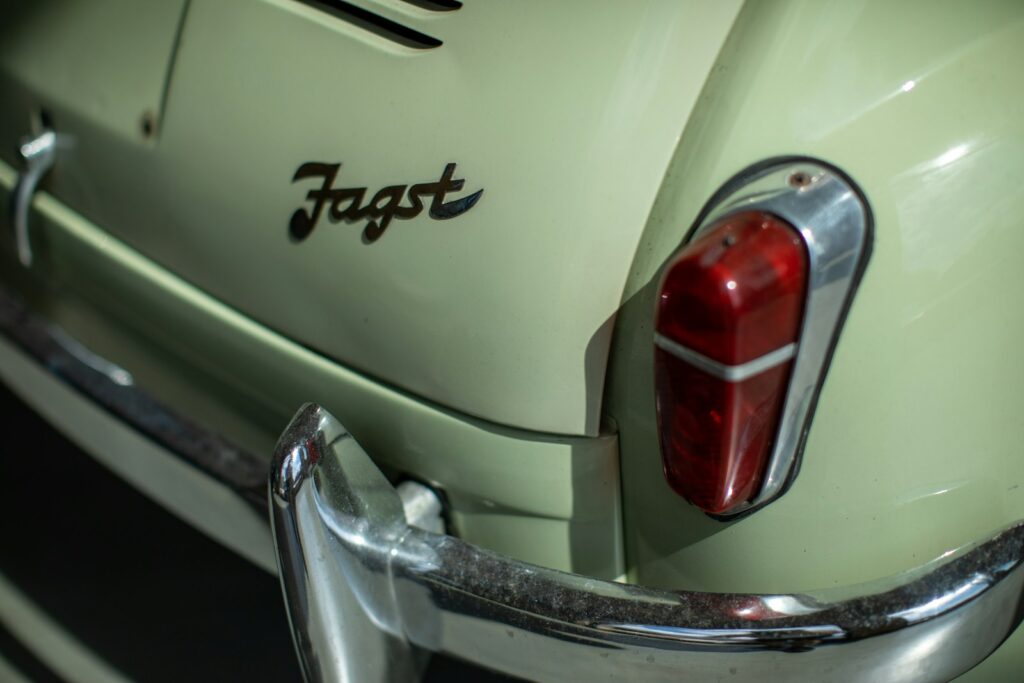
11. **Junior Conway’s 1950 Ford – The Teardrop (1956)**Every legend has to start somewhere, and for Junior Conway, his journey into the world of custom cars began right at Barris Kustoms! After graduating from high school in 1955, Junior joined the iconic shop as a trainee. And what better way to learn the ropes than to apply those newfound skills to your own ride? That’s exactly what he did with his 1950 Ford, which would eventually become the gorgeous “Teardrop.”
While working at the shop, Junior received invaluable guidance and assistance from the seasoned pros around him, soaking up all that Barris Kustoms expertise. It’s truly inspiring to think of a young enthusiast having the chance to learn from the best while actively building his dream car. This hands-on experience, combined with the collective wisdom of the Barris team, contributed immensely to the car’s distinctive appeal.
The “Teardrop” version of Junior Conway’s Ford was completed late in 1956, and it was a stunner! It wasn’t just a personal project; it featured some signature details and expert work personally overseen or contributed by George Barris himself. This collaboration between a budding customizer and the master craftsman resulted in a car that wasn’t just a personal achievement but another testament to the Barris legacy, proving that even a trainee’s ride could embody the spirit of cutting-edge customization.
Car Model Information: 2022 Hyundai PALISADE Calligraphy
Name: Ford F-Series
Caption: 2022 Ford F-150 Lariat Luxury
Manufacturer: Ford Motor Company
Aka: Ford Lobo (Mexico, 1992–present)
Production: 1948–present
Class: Pickup truck#Full-size pickup truck
Layout: Front-engine, rear-wheel-drive layout,rear-wheel drive
Predecessor: 1941 Ford
Categories: All-wheel-drive vehicles, All Wikipedia articles written in American English, All articles that may contain original research, All articles with unsourced statements, Articles that may contain original research from September 2020
Summary: The Ford F-Series is a series of light-duty trucks marketed and manufactured by the Ford Motor Company since model year 1948 as a range of full-sized pickup trucks — positioned between Ford’s Ranger and Super Duty pickup trucks. Alongside the F-150 (introduced in 1975), the F-Series also includes the Super Duty series (introduced in 1999), which includes the heavier-duty F-250 through F-450 pickups, F-450/F-550 chassis cabs, and F-600/F-650/F-750 Class 6–8 commercial trucks.
Get more information about: Ford F-Series
Buying a high-performing used car >>>
Brand: Ford Model: 1950 Ford
Price: $34,194 Mileage: 37,781 mi.

12. **Martin and Morris Srabian’s 1954 Ford F-100 Pickup – The Wild Kat (1956)**Alright, gearheads, let’s talk about the pickup truck revolution! After Spencer Murray introduced the Rod & Custom Dream Truck to the world, custom pickups absolutely soared in popularity during the mid-1950s. And standing tall among these stylish utility vehicles was Martin and Morris Srabian’s 1954 Ford F-100 Pickup, boldly named “The Wild Kat,” which roared onto the scene in 1956. This truck was not just another custom; it was a trailblazer!
What made “The Wild Kat” truly stand out from the pack? Its groundbreaking quad headlight styling! Can you believe it? This innovative feature beat Detroit manufacturers to the punch by a full two years. Barris Kustoms wasn’t just following trends; they were setting them, predicting the future of automotive design with stunning accuracy. Imagine seeing this truck roll by with its sleek, integrated four-headlight setup—it must have looked like something from another planet!
This forward-thinking design cemented “The Wild Kat’s” place as a significant custom. It showcased Barris Kustoms’ uncanny ability to envision and execute design elements that would later become mainstream, proving their influence extended far beyond just cars. It was a stylish, functional, and undeniably cool truck that captured the evolving spirit of customization and remains a vibrant reminder of Barris’s innovative genius.
Car Model Information: 2022 Hyundai PALISADE Calligraphy
Name: Sixth generation
Production: 1972–1979 (USA),1973–1979 (Mexico and Venezuela),1974–1980 (Argentina, F-100, F-250, F-600 and F-700),1974–1981 (Argentina, F-350),1973–1979 (Australia)
Manufacturer: Ford Motor Company
Class: Pickup truck
Layout: Front-engine, rear-wheel-drive layout,rear-wheel drive
BodyStyle: 2-door regular cab , 2-door extended cab , 4-door crew cab
Assembly: General Pacheco,Argentina
Engine: Ford straight-six engine#Third generation,Straight-six engine
Predecessor: Ford F-Series (fifth generation)
Successor: Ford F-Series (seventh generation)
Related: Ford Bronco#1978–1979,Ford F-series (medium duty truck)
ModelYears: 1973–1979
Caption: 1974 F-100
Categories: All-wheel-drive vehicles, All articles needing additional references, All articles with unsourced statements, Articles needing additional references from April 2021, Articles needing additional references from March 2014
Summary: The sixth generation of the Ford F-Series, also known as the “dentside Ford” to enthusiasts, is a line of pickup trucks and medium-duty commercial trucks that were produced by Ford Motor Company from the 1973 to 1979 model years. Produced by Ford in North America, Argentina, and Australia, this is the third and final generation of trucks derived from the 1965 Ford F-Series.
The sixth generation marked several functional design changes and an expansion of the model line. For 1973, the regular cab F-350 became available with a wide “Styleside” bed for the first time. For 1974, a “SuperCab” extended cab pickup truck was introduced, between the two-door standard cab and the four-door crew cab. For 1975, the F-150 was introduced; a higher-payload version of the F-100 (intended to circumvent emissions standards), the F-150 would become the most popular version of the model line (ultimately replacing the F-100). A second generation of the Ford Bronco SUV was released for 1978 (after several years of delays) on a shortened F-100 chassis.
In 1977, the model line surpassed the Chevrolet C/K to become the best-selling truck in the United States, a position it has held ever since.
Get more information about: Ford F-Series (sixth generation)
Buying a high-performing used car >>>
Brand: Ford Model: F-100 Pickup
Price: $34,194 Mileage: 37,781 mi.
And there you have it, folks! From the early, groundbreaking chops and channels to the avant-garde styling that foresaw the future, George Barris and his team at Barris Kustoms didn’t just build vehicles; they sculpted dreams on wheels. Each car we’ve explored, whether a sleek Mercury, a radical Ford, or an innovative pickup, stands as a testament to their unparalleled vision, masterful craftsmanship, and an unwavering commitment to pushing the limits of automotive design. These are more than just custom cars; they are rolling pieces of art, cultural touchstones that continue to inspire awe and spark creativity in every generation of gearheads and enthusiasts. So, next time you see a truly unique ride, take a moment to appreciate the legacy of Barris Kustoms – because chances are, their spirit of innovation is shining right through it!

